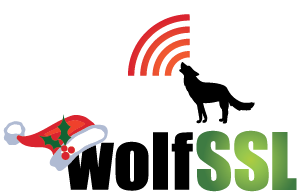wolfHSM provides a client-server model for interacting with HSM’s to do cryptographic operations and currently supports multiple transport mediums: TCP, POSIX shared memory (SHM), and DMA (direct memory access). It gives the option of using wolfCrypt with it’s FIPS 140-3 certification instead of a hardware HSM to take advantage of something like a secure trustzone. […]
Read MoreMore TagCategory: Uncategorized
Live Webinar: The wolfCrypt Linux Kernel Module: FIPS Full Crypto Stack Replacement
Bring FIPS 140-3 validated cryptography directly into the Linux kernel. In this webinar, wolfSSL Senior Software Engineer Daniel Pouzner introduces the libwolfssl FIPS-compliant Linux Kernel Module (libwolfssl.ko), a plug-and-play replacement for the kernel crypto stack. Learn how it delivers FIPS-validated algorithms, hardware acceleration, and post-quantum readiness for applications such as LUKS/dm-crypt, VPN, MACsec, and TLS […]
Read MoreMore TagFIPS 140-3 Enabled Linux Authentication & System Services with GnuTLS-wolfSSL
wolfSSL is thrilled to announce that critical enterprise security and system services can now achieve FIPS 140-3 compliance through our GnuTLS-wolfSSL integration. This breakthrough comes from our ongoing work integrating wolfSSL’s FIPS 140-3 certified cryptography (wolfCrypt) into GnuTLS, enabling a true drop-in solution for Linux applications. For enterprises in government, defense, finance, healthcare, and other […]
Read MoreMore TagFIPS 140-3 Enabled Linux Network Infrastructure with GnuTLS-wolfSSL
wolfSSL is thrilled to announce that core network infrastructure applications can now achieve FIPS 140-3 compliance through our GnuTLS-wolfSSL integration. This breakthrough comes from our ongoing work integrating wolfSSL’s FIPS 140-3 certified cryptography (wolfCrypt) into GnuTLS, enabling a true drop-in solution for Linux applications. For developers and system administrators in government, defense, finance, healthcare, and […]
Read MoreMore TagFIPS 140-3 Enabled Linux Desktop & Media Applications with GnuTLS-wolfSSL
wolfSSL is thrilled to announce that desktop, development, and media applications can now achieve FIPS 140-3 compliance through our GnuTLS-wolfSSL integration. This breakthrough comes from our ongoing work integrating wolfSSL’s FIPS 140-3 certified cryptography (wolfCrypt) into GnuTLS, enabling a true drop-in solution for Linux applications. For developers and organizations in government, defense, finance, healthcare, and […]
Read MoreMore TagNew Keystores and Secure Elements Added to wolfSSL (5.8.2)
wolfSSL continues to expand its hardware security ecosystem with significant new additions over the past year. Here are the latest keystores and secure elements now supported by our cryptographic library: New Secure Element Support TROPIC01 Secure Element wolfSSL now includes dedicated crypto callback functions for the TROPIC01 secure element, providing seamless hardware-backed cryptographic operations for […]
Read MoreMore TagLive webinar: Clarinox Wi-Fi and Bluetooth Integration with wolfSSL
Unlock secure, reliable wireless communication for your embedded devices. In this webinar, wolfSSL and Clarinox will show how developers can integrate lightweight TLS 1.3 security with embedded wireless stacks to build safer, standards-compliant devices. You’ll learn how Clarinox Wireless Stacks leverage wolfSSL for FIPS 140-3 validated cryptography and post-quantum support. You’ll also learn how ClarinoxBlue […]
Read MoreMore TagNew Docker containers for Python FIPS 140-3 integration
For developers seeking to implement FIPS 140-3 compliance in their secure Python applications, wolfSSL has already been offering effective solutions: wolfProvider enables the use of wolfCrypt as the underlying crypto provider for OpenSSL. The wolfSSL Python ports let you completely replace OpenSSL with wolfSSL in Python’s ssl module. However, we understand that the initial setup […]
Read MoreMore TagFIPS 140-3 Enabled WebKit2GTK with wolfSSL
wolfSSL is thrilled to announce that it is now possible to build FIPS 140-3 compliant applications using WebKit2GTK. This achievement comes from our recent porting efforts, integrating wolfSSL’s FIPS 140-3 certified cryptography (wolfCrypt) into core cryptographic libraries: GnuTLS, OpenSSL, and Gcrypt. For developers in government, defense, finance, healthcare, and other regulated industries, this eliminates a […]
Read MoreMore TagCRA Compliant curl
As the Cyber Resilience Act (CRA) is getting closer and companies wanting to sell digital services in goods within the EU need to step up, tighten their procedures, improve their documentation and get control over their dependencies I feel it could be timely to remind everyone: We of course offer full support and fully CRA […]
Read MoreMore Tag
